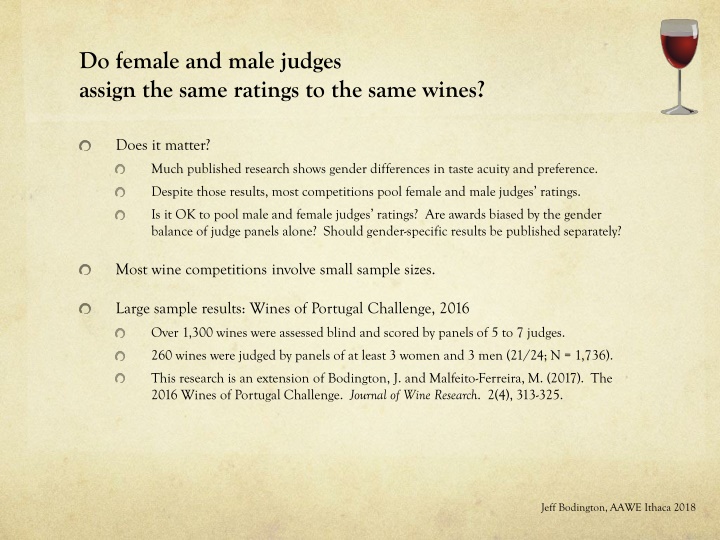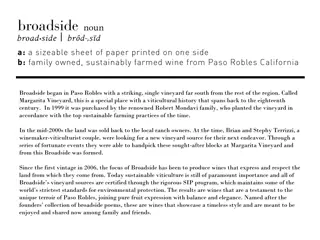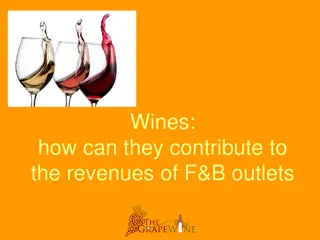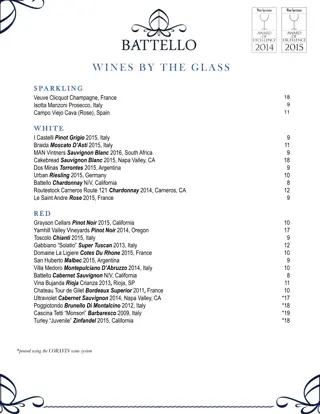Gender Disparity in Wine Judging: Insights from Wines of Portugal Challenge
Recent research delves into the question of whether male and female judges assign similar ratings to wines, and the implications of gender balance in wine competition judging panels. The study, which involved over 1,300 wines judged by panels with a mix of male and female judges, found minimal differences in scores between genders. The null hypothesis indicated a high p-value, suggesting no significant difference in ratings. This challenges the traditional views on gender biases in taste acuity and preference in wine judging. The research raises questions about the necessity of pooling male and female judges' ratings and whether gender-specific results should be published separately in wine competitions.
Download Presentation

Please find below an Image/Link to download the presentation.
The content on the website is provided AS IS for your information and personal use only. It may not be sold, licensed, or shared on other websites without obtaining consent from the author.If you encounter any issues during the download, it is possible that the publisher has removed the file from their server.
You are allowed to download the files provided on this website for personal or commercial use, subject to the condition that they are used lawfully. All files are the property of their respective owners.
The content on the website is provided AS IS for your information and personal use only. It may not be sold, licensed, or shared on other websites without obtaining consent from the author.
E N D
Presentation Transcript
Do female and male judges assign the same ratings to the same wines? Does it matter? Much published research shows gender differences in taste acuity and preference. Despite those results, most competitions pool female and male judges ratings. Is it OK to pool male and female judges ratings? Are awards biased by the gender balance of judge panels alone? Should gender-specific results be published separately? Most wine competitions involve small sample sizes. Large sample results: Wines of Portugal Challenge, 2016 Over 1,300 wines were assessed blind and scored by panels of 5 to 7 judges. 260 wines were judged by panels of at least 3 women and 3 men (21/24; N = 1,736). This research is an extension of Bodington, J. and Malfeito-Ferreira, M. (2017). The 2016 Wines of Portugal Challenge. Journal of Wine Research. 2(4), 313-325. Jeff Bodington, AAWE Ithaca 2018
The most likely difference between the averages of scores assigned by female and male judges is about zero.
The distributions of scores for judges with actual and randomly-assigned gender look similar.























